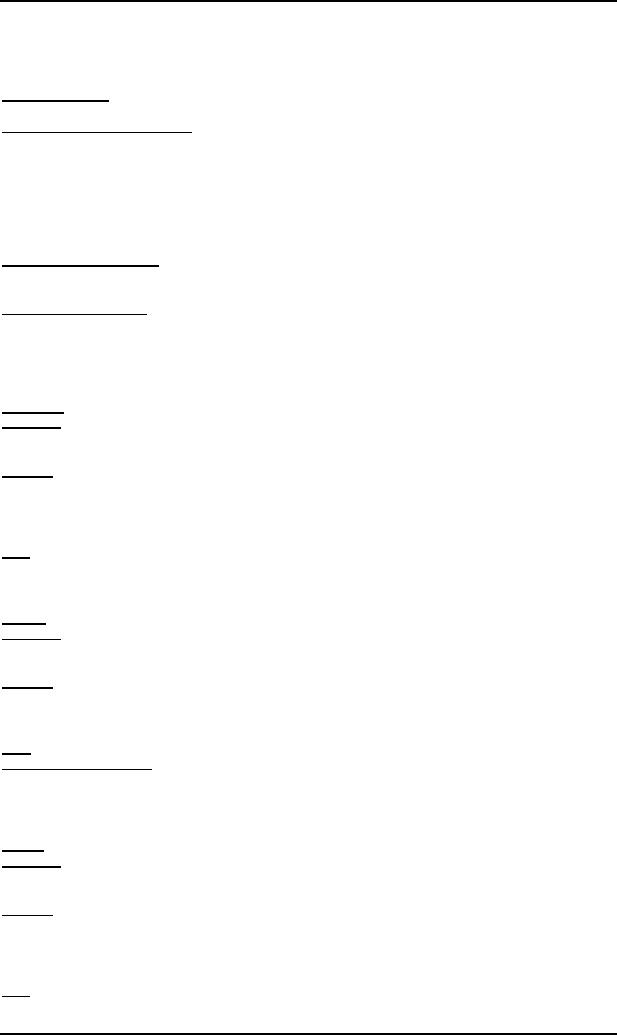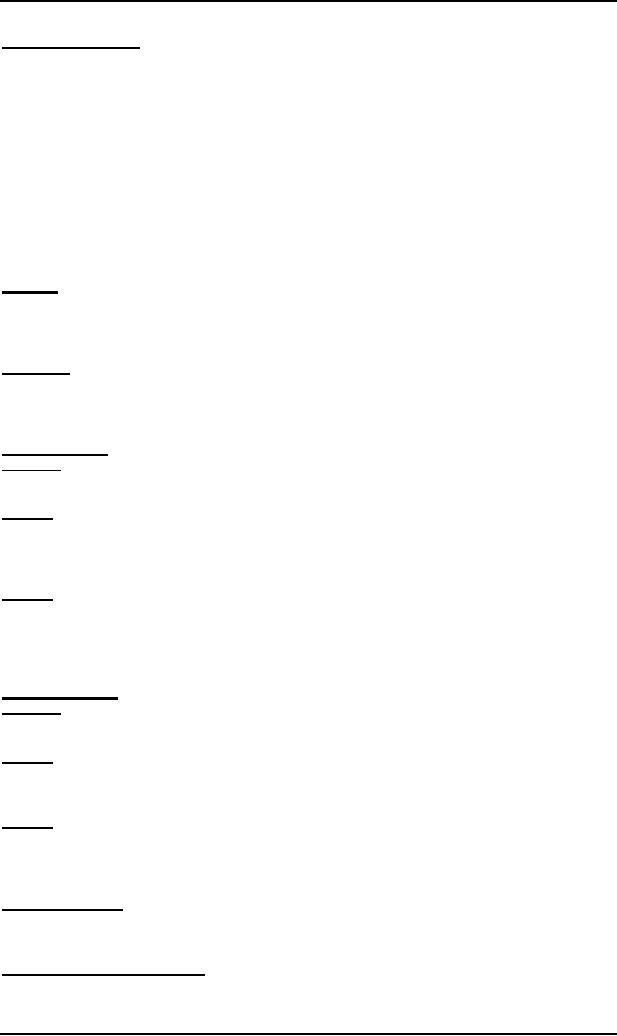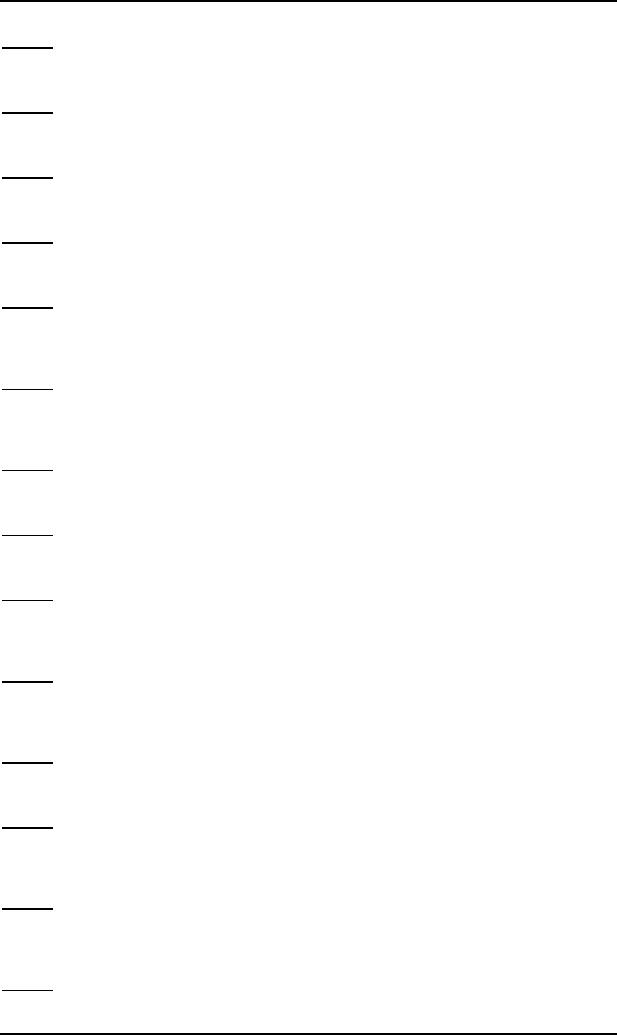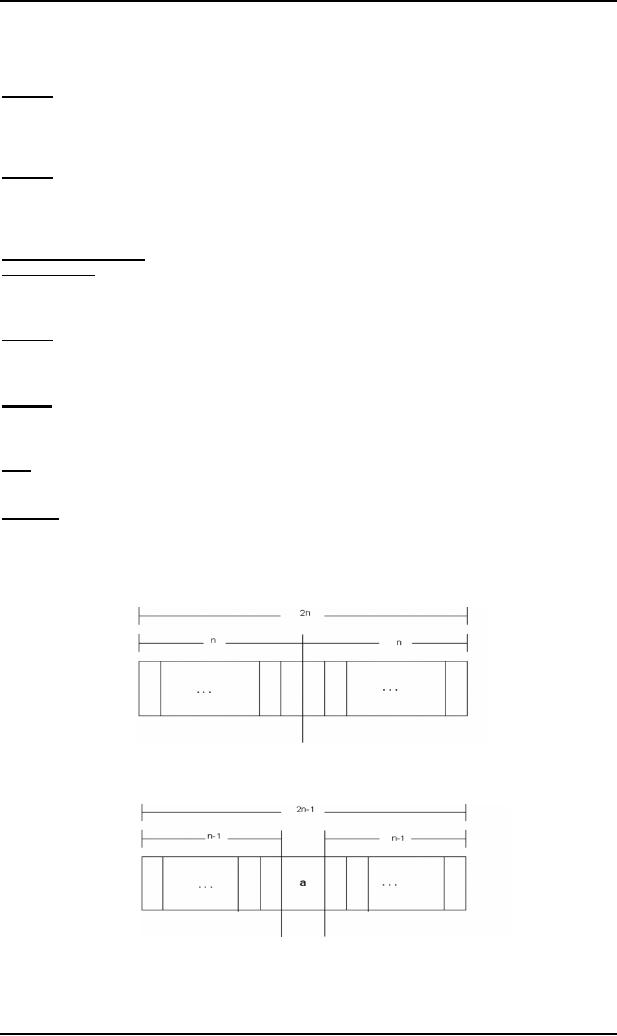 |
What does automata mean, Introduction to languages |
| << Table of Contents |
| Kleene Star Closure, Recursive definition of languages >> |

Theory of
Automata
(CS402)
Theory of
Automata
Lecture
N0. 1
Reading
Material
Introduction
to Computer Theory
Chapter
2
Summary
Introduction
to the course title, Formal and
In-formal languages, Alphabets,
Strings, Null string, Words,
Valid
and
In-valid alphabets, length of a string,
Reverse of a string, Defining languages,
Descriptive definition of
languages,
EQUAL, EVEN-EVEN, INTEGER,
EVEN, { an
bn}, { an bn an }, factorial,
FACTORIAL,
DOUBLEFACTORIAL,
SQUARE, DOUBLESQUARE, PRIME,
PALINDROME.
What
does automata mean?
It is the
plural of automaton, and it
means "something that works
automatically"
Introduction
to languages
There
are two types of
languages
Formal
Languages (Syntactic
languages)
Informal
Languages (Semantic
languages)
Alphabets
Definition
A finite
non-empty set of symbols (called
letters), is called an alphabet. It is
denoted by Σ ( Greek letter
sigma).
Example
Σ =
{a,b}
Σ = {0,1}
(important
as this is the language which
the computer understands.)
Σ =
{i,j,k}
Note
Certain version of language
ALGOL has 113
letters.
Σ (alphabet)
includes letters, digits and a
variety of operators including
sequential operators such as
GOTO and
IF
Strings
Definition
Concatenation
of finite number of letters from
the alphabet is called a string.
Example
If Σ =
{a,b} then
a, abab,
aaabb, ababababababababab
Note
Empty string or
null string
Sometimes
a string with no symbol at all is used,
denoted by (Small Greek letter Lambda) λ or
(Capital Greek
letter Lambda) Λ, is
called an empty string or null
string.
The
capital lambda will mostly be used to
denote the empty string, in
further discussion.
Words
Definition
Words
are strings belonging to
some language.
Example
If Σ= {x}
then a language L can be
defined as
L={xn : n=1,2,3,.....} or
L={x,xx,xxx,....}
Here
x,xx,... are the words of
L
Note
All
words are strings, but not
all strings are
words.
4

Theory of
Automata
(CS402)
Valid/In-valid
alphabets
While
defining an alphabet, an alphabet
may contain letters consisting of
group of symbols for example
Σ1= {B,
aB,
bab, d}.
Now
consider an alphabet
Σ2= {B, Ba, bab, d}
and a string BababB.
This
string can be tokenized in two
different ways
(Ba),
(bab), (B)
(B),
(abab), (B)
Which
shows that the second
group cannot be identified as a
string, defined over
Σ = {a,
b}.
As when
this string is scanned by the
compiler (Lexical Analyzer), first
symbol B is identified as a letter
belonging
to Σ, while for the second
letter the lexical analyzer would not be
able to identify, so while
defining
an
alphabet it should be kept in mind
that ambiguity should not be
created.
Remarks
While
defining an alphabet of letters
consisting of more than one
symbols, no letter should be started with
the
letter of
the same alphabet i.e.
one
letter should not be the prefix of
another. However, a letter may be
ended in a
letter of
same alphabet.
Conclusion
Σ1= {B, aB, bab,
d}
Σ2= {B, Ba, bab,
d}
Σ1 is a valid alphabet while
Σ2 is an in-valid
alphabet.
Length of
Strings
Definition
The
length of string s, denoted by |s|, is
the number of letters in the
string.
Example
Σ={a,b}
s=ababa
|s|=5
Example
Σ= {B,
aB, bab, d}
s=BaBbabBd
Tokenizing=(B),
(aB), (bab), (B), (d)
|s|=5
Reverse
of a String
Definition
The
reverse of a string s denoted by Rev(s) or
sr, is obtained by writing
the letters of s in reverse order.
Example
If s=abc
is a string defined over Σ={a,b,c}
then
Rev(s) or sr
=
cba
Example
Σ= {B,
aB, bab, d}
s=BaBbabBd
Rev(s)=dBbabaBB
Defining
Languages
The
languages can be defined in
different ways , such as
Descriptive definition, Recursive
definition, using
Regular
Expressions(RE) and using Finite
Automaton(FA) etc.
Descriptive
definition of language
The
language is defined, describing the
conditions imposed on its words.
5

Theory of
Automata
(CS402)
Example
The
language L of strings of odd length,
defined over Σ={a}, can be
written as
L={a,
aaa, aaaaa,.....}
Example
The
language L of strings that
does not start with a,
defined over Σ ={a,b,c}, can
be written as
L ={L, b, c,
ba, bb, bc, ca,
cb, cc, ...}
Example
The
language L of strings of length 2,
defined over Σ ={0,1,2}, can
be written as
L={00,
01, 02,10,
11,12,20,21,22}
Example
The
language L of strings ending in 0,
defined over Σ ={0,1}, can
be written as
L={0,00,10,000,010,100,110,...}
Example
The
language EQUAL, of
strings with number of a's equal to
number of b's, defined over
Σ={a,b}, can be
written
as
{Λ
,ab,aabb,abab,baba,abba,...}
Example
The
language EVEN-EVEN, of
strings with even number of
a's and even number of b's,
defined over Σ={a,b},
can be
written as
{Λ,
aa, bb, aaaa,aabb,abab,
abba, baab, baba, bbaa,
bbbb,...}
Example
The
language INTEGER, of
strings defined over
Σ={-,0,1,2,3,4,5,6,7,8,9}, can be written
as
INTEGER =
{...,-2,-1,0,1,2,...}
Example
The
language EVEN, of
stings defined over
Σ={-,0,1,2,3,4,5,6,7,8,9}, can be written
as
EVEN = {
...,-4,-2,0,2,4,...}
Example
The
language {anbn }, of strings defined over
Σ={a,b}, as
{an bn : n=1,2,3,...},
can be written as
{ab,
aabb, aaabbb,aaaabbbb,...}
Example
The
language {anbnan }, of strings
defined over Σ={a,b},
as
{an bn an:
n=1,2,3,...}, can be written
as
{aba,
aabbaa,
aaabbbaaa,aaaabbbbaaaa,...}
Example
The
language factorial, of
strings defined over
Σ={0,1,2,3,4,5,6,7,8,9} i.e.
{1,2,6,24,120,...}
Example
The
language FACTORIAL, of
strings defined over Σ={a},
as
{an! : n=1,2,3,...}, can be
written as
{a,aa,aaaaaa,...}. It
is to be noted that the
language FACTORIAL can be
defined over any single letter
alphabet.
Example
The
language DOUBLEFACTORIAL, of
strings defined over Σ={a,
b}, as
{an!bn! : n=1,2,3,...},
can be written as
{ab,
aabb, aaaaaabbbbbb,...}
Example
The
language SQUARE, of
strings defined over Σ={a},
as
6

Theory of
Automata
(CS402)
{an 2 : n=1,2,3,...}, can be written
as
{a,
aaaa, aaaaaaaaa,...}
Example
The
language DOUBLESQUARE, of
strings defined over
Σ={a,b}, as
{an 2 bn 2 : n=1,2,3,...},
can be written as
{ab,
aaaabbbb, aaaaaaaaabbbbbbbbb,...}
Example
The
language PRIME, of
strings defined over Σ={a},
as
{ap : p is prime}, can be written
as
{aa,aaa,aaaaa,aaaaaaa,aaaaaaaaaaa...}
An
Important language
PALINDROME
The
language consisting of Λ and
the strings s defined over Σ
such that Rev(s)=s.
It is to be
denoted that the words of
PALINDROME are called palindromes.
Example
For
Σ={a,b},
PALINDROME={Λ
, a, b, aa, bb, aaa, aba,
bab, bbb, ...}
Remark
There
are as many palindromes of length 2n as
there are of length 2n-1.
To prove
the above remark, the
following is to be noted:
Note
Number of
strings of length `m' defined
over alphabet of `n' letters
is nm.
Examples
The
language of strings of length 2, defined
over Σ={a,b} is L={aa, ab,
ba, bb} i.e.
number of
strings = 22
The
language of strings of length 3, defined
over Σ={a,b} is L={aaa, aab,
aba, baa, abb, bab,
bba, bbb} i.e.
number of
strings = 23
To
calculate the number of palindromes of
length(2n), consider the
following diagram,
which
shows that there are as
many palindromes of length 2n as there
are the strings of length n i.e.
the
required
number of palindromes
are 2n.
To
calculate the number of palindromes of length
(2n-1) with `a' as the
middle letter, consider the
following
diagram,
which
shows that there are as
many palindromes of length 2n-1 as there
are the strings of length
n-1 i.e.
the
required
number of palindromes are 2n-1.
7

Theory of
Automata
(CS402)
Similarly
the number of palindromes of length 2n-1,
with ` b ' as middle letter, will be
2n-1 as well. Hence
the
total number of
palindromes of length 2n-1 will be 2n-1 + 2n-1 = 2
(2n-1)= 2n .
8
Table of Contents:
- What does automata mean, Introduction to languages
- Kleene Star Closure, Recursive definition of languages
- Regular Expression, Recursive definition of Regular Expression
- Equivalent Regular Expressions
- Finite Automaton
- Equivalent FAs
- FA corresponding to finite languages
- Examples of TGs: accepting all strings
- Generalized Transition Graphs
- Nondeterminism, Kleene’s Theorem
- Proof(Kleene’s Theorem Part II)
- Kleene’s Theorem Part III
- Concatenation of FAs
- Closure of an FA
- Nondeterministic Finite Automaton, Converting an FA to an equivalent NFA
- NFA with Null String
- NFA and Kleene’s Theorem
- NFA corresponding to Concatenation of FAs
- Distinguishable strings and Indistinguishable strings
- Finite Automaton with output, Moore machine
- Mealy machine
- Equivalent machines
- Mealy machines in terms of sequential circuit
- Regular languages, Complement of a language
- Nonregular languages
- Pumping Lemma
- Pumping Lemma version II
- Pseudo theorem
- Decidability
- finiteness of a language
- Context Free Grammar (CFG), CFG terminologies
- Trees
- Polish Notation (o-o-o)
- Total language tree, Regular Grammar
- Null Production
- Chomsky Normal Form (CNF)
- A new format for FAs
- Nondeterministic PDA
- PDA corresponding to CFG
- Conversion form of PDA
- Conversion Form, Joints of the machine
- Row language, Nonterminals
- Non-Context-Free language, Pumping lemma for CFLs
- Decidablity, Parsing Techniques
- Turing machine